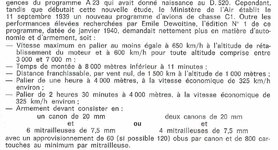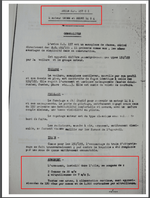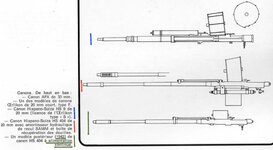Shortround6
Lieutenant General
You may want the ammo to last longer than 9 seconds even on short distance missions. Russians deliberately used lighter armament to keep performance up. They often tried to increase it, like using 23mm and 37mm cannon but those were special purpose or at least not main production types.2. Nobody was touting that Yak-3 or it's other European counterparts were good for multi-hour 1500 mile missions over the enemy land.
The French had a lot of flawed theories. Aircraft, tanks, AA guns, artillery in general. Which lead to flawed products. Designers were trying to do what the customer wanted. What the customer wanted was often not what the customer really needed.
They felt the urge in 1940, what they didn't have was the doctrine, training, tactics, etc. Heck, they were trying to use Amoit 143s for close support at times (they didn't have anything else due to flaws in procurement). Now we can argue over well the Bloch 152s would have doneFrench have the MB fighters to try in that role after all, should they feel the urge.
It might, but an unresolved problem is for how long. The Soviets had added about 100kg to the engine just to get it to the M-105PF stage. French were claiming they could hit the next level (1300-1400hp at 5km) for the same weight. In fact they were claiming they could hit the 1600hp at 6km (?)level for the same weight (600kg) as the M-105PF or only 20kg heavier? Swiss thought they needed 685kg to make 1410hp at 4.8km.The HS 12Z might not be making 1600 HP at 6 km in 1942-43, but it might be making 1300-1400 at 5 km.
What I was getting at was the basic engine. Much like the Merlin had shown it could last at 1600hp for hours in 1938 and allowed development to go other places (like the superchargers) the Allison was being improved during 1940-41 to where they had a very good basic engine. It did need some tweaks (new piston rings and valve springs and such) but in 1944 they were using 60in of MAP in P-38s and were approved for 70in on 44-1 fuel. P-63s were approved for 75in WEP (with water) and 1820. Now there were significant problems with the aux supercharger making power at altitude but the basic engine seemed to OK surviving those power levels. Allison needed better superchargers, not denying that.The 'altitude power' metric is showing how good was the engine ABC at the higher altitudes when compared with the competing engine XYZ or RPQ. Per that metric, V-1710 was not as good as the German competition (typically DB 601/605), or the British competition (Merlin); comparison vs. the BMW 801 or Griffon is ever worse for the V-1710. Even for the altitudes of 5-6 km, let alone for 8+ km
Unfortunately, the V-1710 badly needed the improvement of the S/C already before the time of Pearl Harbor attack.
But if you stick a really great supercharger on a crap engine you are stuck with a crap engine. And that is the problem with the French engines.
Allison knew they needed to improve the supercharger but the quick fix in Dec 1941 (9.60 gears) didn't work and had to wait almost a year.
Allison and the US were a little late to the game. Allison was building about 200-300 engine a month at the beginning of 1941 (it fluctuated a lot) but hit 500 engines in July and just over 1000 engines in Dec 1941. Better superchargers would have been nice in 1942, very nice, but for the US there wasn't a lot of choice. Allison made just over twice as many engines in 1942 as Packard and 2/3rds of Packards engines were contracted to the British.
Turbo P-40s, P-60s, etc were not built.




